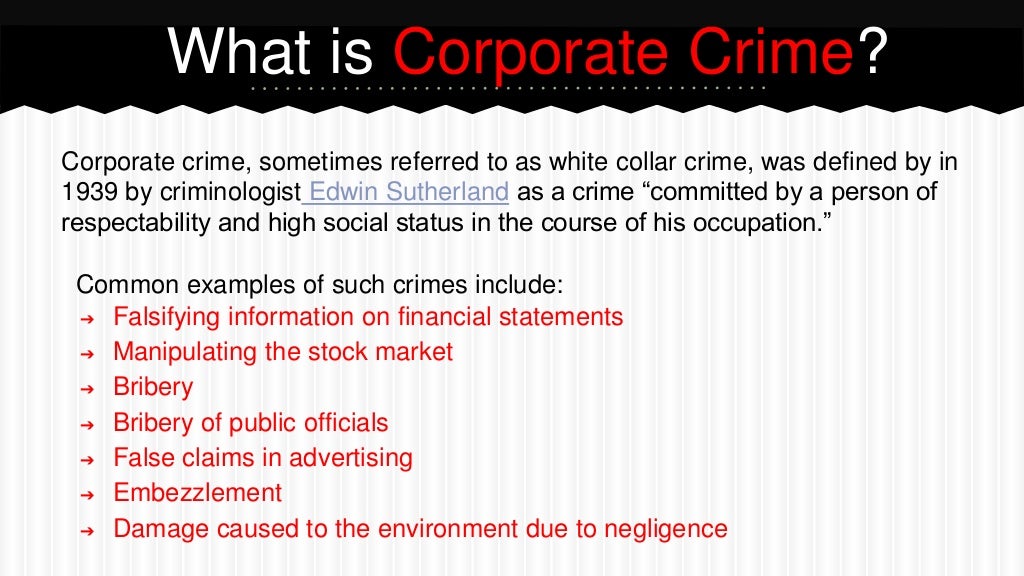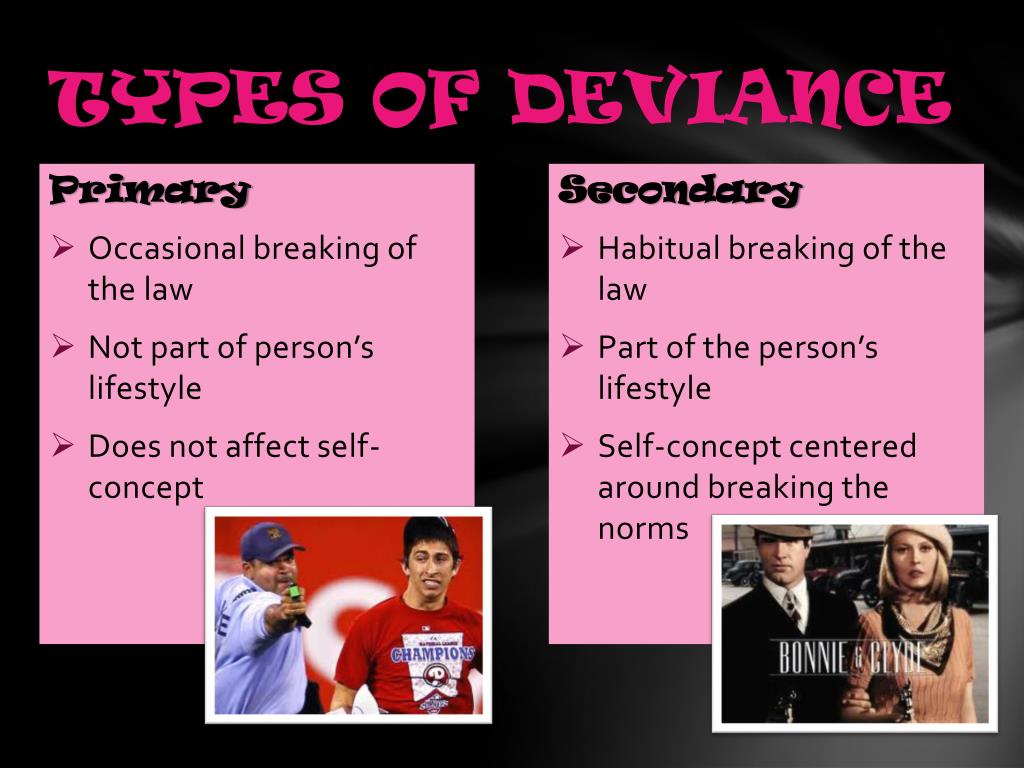Imagine walking down the street and seeing someone dressed in a brightly colored costume, dancing enthusiastically to music only they can hear. Or perhaps you’ve witnessed a heated argument in a public place, the words escalating into shouts and obscenities. What do these scenarios have in common? They represent behaviors that deviate from societal norms, actions that we might consider unusual, strange, or even unsettling. But what exactly constitutes deviance, and why is it so intriguing (and sometimes, unsettling)?

Image: www.slideshare.net
Understanding deviance is about exploring the boundaries of acceptable behavior in our society. It’s not simply about identifying “bad” or “wrong” actions, but rather examining the complex interplay of societal expectations, individual choices, and the power dynamics that shape our understanding of what’s considered normal. This article delves into the fascinating world of deviance, exploring its diverse forms, the factors that contribute to its emergence, and the impact it has on our lives.
Types of Deviance: A Journey Through the Spectrum of Social Norms
The concept of deviance is multifaceted, encompassing a wide range of behaviors and beliefs that challenge or transgress societal norms. While some forms of deviance might be considered harmless or even beneficial, others can have serious consequences, both for the individual and society as a whole. Let’s delve into some of the key categories:
1. Formal Deviance: When Rules are Broken
Formal deviance refers to violations of established laws and regulations. This category includes a wide range of offenses, from minor traffic violations to serious crimes like murder and assault. Formal deviance is often associated with the legal system and is typically met with punishment, ranging from fines to imprisonment.
Examples: Stealing a car, engaging in illicit drug use, committing fraud
2. Informal Deviance: Stepping Outside Societal Expectations
Informal deviance encompasses behaviors that violate unwritten social norms and expectations, though they may not necessarily be illegal. These actions are often considered inappropriate, disrespectful, or simply “not the done thing” within a particular social context.
Examples: Picking your nose in public, interrupting conversations, wearing inappropriate clothing for a specific occasion

Image: www.slideserve.com
3. Social Deviance: Challenging Cultural Values
Social deviance refers to behaviors that challenge the fundamental values and beliefs of a society or culture. Often considered highly controversial, these actions may be met with strong disapproval, ostracization, or even persecution.
Examples: Polyamory, engaging in unconventional religious practices, advocating for political views that clash with mainstream ideologies
4. Physical Deviance: When Appearance Matters
Physical deviance involves deviations from the expected norms of physical appearance, encompassing body modifications, clothing choices, and even physical disabilities. These forms of deviance often trigger judgment and discrimination, highlighting societal biases and the pressure to conform to idealized standards of beauty.
Examples: Getting tattoos or piercings, wearing clothing considered “too revealing” or “unconventional,” having a visible disability
5. Sexual Deviance: Exploring the Boundaries of Sexuality
Sexual deviance encompasses behaviors and preferences that deviate from societal norms surrounding sex and intimacy. These can range from practices deemed taboo or transgressive to non-conforming sexual orientations and identities.
Examples: Engaging in unconventional sexual practices, expressing a sexual orientation that deviates from the dominant heterosexual norm
6. Mental Illness as Deviance: A Complex Intersection
Mental illness can sometimes be viewed as a form of deviance, particularly when individuals’ behaviors or experiences deviate from the socially accepted norm of “normal” mental functioning. However, it’s crucial to recognize that mental illness is not a choice but a medical condition requiring understanding, support, and appropriate treatment.
Examples: Experiencing symptoms of anxiety, depression, or other mental health conditions that impact daily functioning
7. Cultural Deviance: Navigating Cross-Cultural Differences
Cultural deviance arises from behaviors that are considered deviant within one culture but may be perfectly acceptable in another. This highlights the subjective nature of deviance and the importance of recognizing cultural differences when evaluating behaviors.
Examples: Practices like arranged marriages, polygamy, or certain forms of public displays of affection that are acceptable in some cultures but considered deviant in others
8. Situational Deviance: Context is Key
Situational deviance refers to behaviors that are considered deviant only within specific contexts or situations. These actions might be perfectly acceptable in one setting but taboo in another.
Examples: Wearing revealing clothing at a beach party vs. at a professional meeting
9. Age-Based Deviance: The Role of Generations
Age-based deviance involves behaviors that are considered deviant based on an individual’s age. This often reflects changing societal norms and expectations across generations, with behaviors deemed acceptable for one age group being frowned upon for another.
Examples: A teenager engaging in risky behaviors that are considered inappropriate for a young adult, an elderly individual engaging in behaviors typically associated with youth
10. The Power of Labeling: Deviance Through Societal Perception
The concept of labeling theory suggests that deviance is not inherent in an act itself but rather a result of society’s perception and labeling of that act. This perspective highlights the role of social power in shaping our understanding of deviance.
Examples: A young person wearing unusual clothing might be labeled as “weird” or “unconventional,” while a celebrity wearing the same outfit might be praised for their “unique style”
Types Of Deviances
Expert Insights and Actionable Tips: Navigating the World of Deviance
Understanding the nuances of deviance can empower us to challenge biases and promote inclusivity in our interactions with others. Dr. Alice Miller, a renowned sociologist specializing in deviant behavior, emphasizes the importance of critical thinking and empathy when encountering individuals who exhibit behaviors we might perceive as deviant. “It’s essential to move beyond judging someone’s actions and instead inquire into the contexts that may have contributed to those actions,” states Dr. Miller. “Understanding the individual’s background, social environment, and personal experiences can lead to greater compassion and a nuanced understanding of their choices.”
In our personal lives, we can practice mindful awareness by challenging our own prejudices and biases relating to deviance. Ask yourself:
- Why am I judging this person?
- What societal norms am I subconsciously using as a basis of my judgment?
- What information am I missing that could provide a more complete understanding of the situation?
By approaching situations with open-mindedness and empathy, we can contribute to a more inclusive and understanding society, one that celebrates diversity and challenges the limitations of rigid societal norms.






